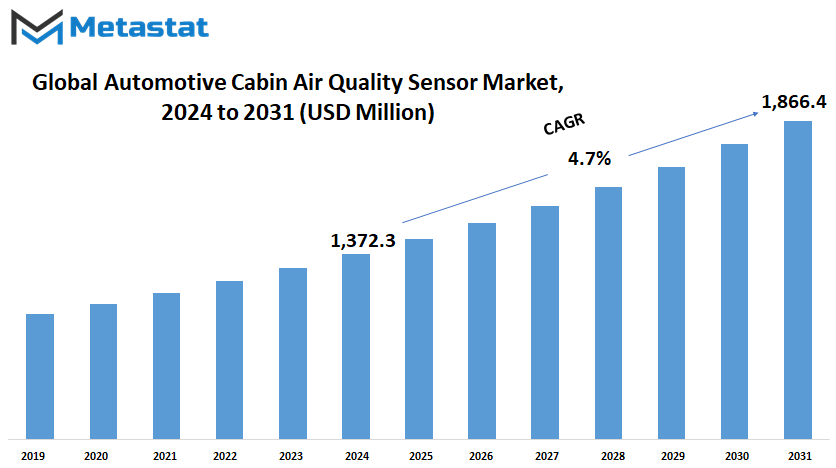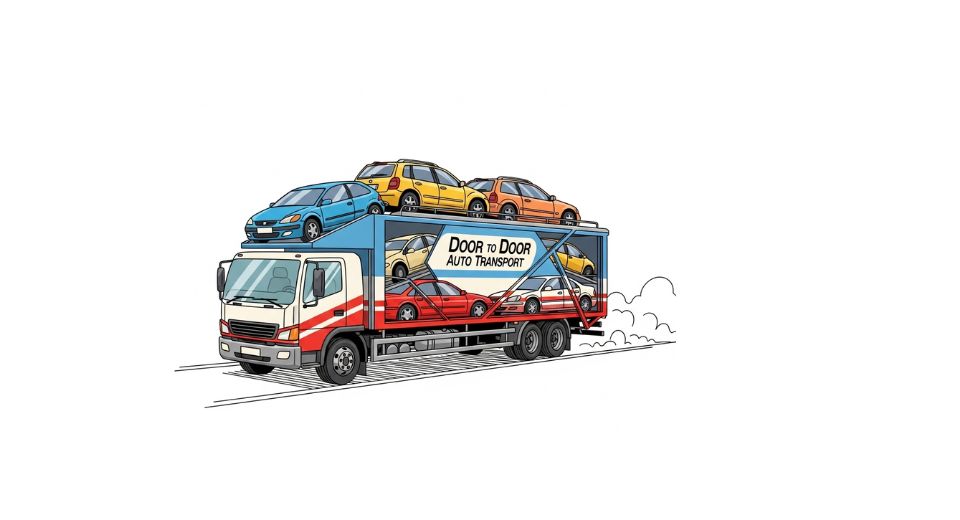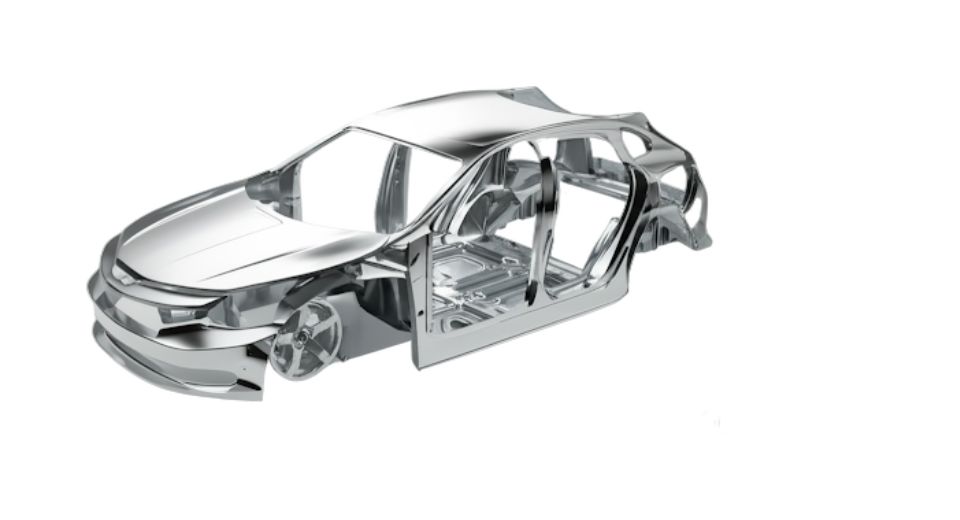MARKET OVERVIEW
The Global Automotive Cabin Air Quality Sensor market represents a dynamic sector within the automotive industry, dedicated to enhancing the overall air quality inside vehicle cabins. This niche market has gained prominence due to increasing concerns regarding air pollution and its impact on human health, particularly in urban environments where vehicular emissions are a significant contributor to poor air quality.
Within the automotive industry, the focus on cabin air quality has intensified in recent years, driven by regulatory mandates, consumer demand for healthier and more comfortable driving experiences, and advancements in sensor technology. Cabin air quality sensors play a crucial role in monitoring various pollutants and contaminants present inside the vehicle, such as particulate matter, volatile organic compounds (VOCs), carbon monoxide, nitrogen oxides, and allergens.
The automotive cabin air quality sensor market encompasses a diverse range of sensor technologies, including particulate matter sensors, gas sensors, humidity sensors, and temperature sensors, among others. These sensors are integrated into the vehicle's HVAC (Heating, Ventilation, and Air Conditioning) systems to continuously monitor air quality parameters and provide real-time feedback to the vehicle's onboard computer systems.
The automotive cabin air quality sensor market is characterized by intense competition among key players, including automotive OEMs (Original Equipment Manufacturers), sensor manufacturers, and technology providers. These companies are continuously investing in research and development to innovate and introduce cutting-edge sensor technologies that offer superior performance, accuracy, and reliability.
Additionally, technological advancements such as the integration of artificial intelligence (AI) and machine learning algorithms into cabin air quality sensing systems are poised to revolutionize the market by enabling predictive maintenance, personalized comfort settings, and adaptive filtration strategies based on real-time data analytics.
The Global Automotive Cabin Air Quality Sensor market represents a niche yet significant segment within the automotive industry, driven by the increasing emphasis on air quality monitoring and the adoption of advanced sensor technologies. As concerns regarding air pollution continue to escalate, the demand for innovative cabin air quality sensing solutions is expected to grow, presenting lucrative opportunities for market players to capitalize on emerging trends and technological advancements.
Global Automotive Cabin Air Quality Sensor market is estimated to reach $1,866.4 Million by 2031; growing at a CAGR of 4.7% from 2024 to 2031.

GROWTH FACTORS
The Global Automotive Cabin Air Quality Sensor market is experiencing growth due to several key factors. One significant factor is the increasing awareness among consumers about air pollution and indoor air quality. As people become more conscious of the air they breathe, there's a growing demand for cabin air quality sensors in vehicles. This demand is further fueled by stringent regulatory standards and guidelines that mandate the installation of air quality monitoring systems in automobiles. These regulations aim to safeguard occupants' health and safety while driving.
However, the market faces challenges as well. One such challenge is the cost constraints for automotive manufacturers when integrating advanced sensor technologies into vehicles. The expenses associated with these technologies can impact market adoption rates. Additionally, there are technological limitations and accuracy issues in detecting certain pollutants and volatile organic compounds (VOCs) in the cabin air. These limitations hinder the overall growth of the market by posing obstacles to effectively monitoring air quality.
Despite these challenges, there are opportunities for growth and innovation within the market. Collaboration with air purification system manufacturers presents a promising avenue for the integration of cabin air quality sensors with filtration systems. By working together, companies can offer comprehensive solutions for improving air quality inside vehicles. This integration not only addresses the concerns of consumers regarding cabin air quality but also enhances occupant comfort and well-being during travel.
Looking ahead, the market is poised for further expansion as advancements in sensor technology continue and collaboration efforts strengthen. As consumers prioritize health and environmental concerns, the demand for vehicles equipped with cabin air quality sensors is expected to rise. Additionally, ongoing research and development initiatives aimed at addressing technological limitations and improving sensor accuracy will contribute to market growth.
The Global Automotive Cabin Air Quality Sensor market is driven by increasing consumer awareness, regulatory standards, and the need for improved air quality in vehicles. While challenges such as cost constraints and technological limitations exist, collaboration and innovation offer opportunities for market expansion and the development of more effective solutions for monitoring and enhancing cabin air quality.
MARKET SEGMENTATION
By Type
The global automotive cabin air quality sensor market is set to experience significant growth in the coming years, driven by advancements in sensor technology and the increasing focus on enhancing passenger comfort and safety. These sensors, which include pressure sensors and temperature sensors, play a crucial role in monitoring and maintaining the quality of air inside vehicle cabins.
Pressure sensors in the automotive cabin air quality market are designed to measure the pressure of air within the cabin. This is important because it helps in detecting any fluctuations or changes in air pressure that could affect the overall air quality and comfort for passengers. With advancements in technology, these sensors are becoming more precise and reliable, ensuring that any changes in cabin pressure are quickly identified and addressed. This can lead to a more comfortable and safer driving experience, as the system can automatically adjust ventilation and filtration systems in response to the detected pressure changes.
On the other hand, temperature sensors are essential for maintaining the ideal temperature within the vehicle cabin. They work by continuously monitoring the temperature and ensuring it stays within a comfortable range for passengers. The integration of smart temperature sensors allows for real-time adjustments to heating and cooling systems, providing an optimal environment regardless of external weather conditions. This not only enhances passenger comfort but also contributes to energy efficiency, as the system can operate more effectively without unnecessary energy consumption.
Furthermore, the rise of electric and autonomous vehicles is likely to accelerate the adoption of advanced cabin air quality sensors. Electric vehicles, with their focus on sustainable and environmentally friendly technology, will benefit from advanced sensors that can provide cleaner air. Autonomous vehicles, which are expected to offer a more relaxed and luxurious travel experience, will rely on these sensors to ensure the air quality remains consistently high without manual intervention.
By Technology
The Global Automotive Cabin Air Quality Sensor market is witnessing significant growth, driven by technological advancements and increasing awareness about air quality. This market is broadly divided into two categories based on the technology used: Active Sensors and Passive Sensors. Each type has distinct features and benefits that cater to different needs within the automotive industry.
Active sensors play a crucial role in monitoring and managing the air quality inside a vehicle. These sensors actively measure the concentration of various pollutants and can provide real-time data, allowing for immediate adjustments to improve air quality. They are equipped with advanced detection systems that can identify harmful gases such as carbon monoxide, nitrogen dioxide, and volatile organic compounds. By continuously analyzing the air, active sensors help maintain a healthier environment for passengers, making them an essential component in modern vehicles. As technology progresses, we can expect these sensors to become even more precise and responsive, further enhancing their effectiveness.
On the other hand, passive sensors, while less dynamic than active sensors, offer a reliable alternative for air quality monitoring. These sensors do not actively measure air quality but instead detect changes in the environment over time. They are often used to monitor the presence of specific pollutants and can be highly effective in maintaining long-term air quality. Passive sensors are generally more cost-effective and simpler to install, making them a popular choice for many automotive manufacturers. In the future, improvements in passive sensor technology could lead to greater sensitivity and accuracy, providing a more comprehensive understanding of air quality trends within the vehicle cabin.
Moreover, regulatory bodies around the world are implementing stricter standards for vehicle emissions and air quality. These regulations are pushing manufacturers to adopt better air quality management systems, including advanced sensors. The integration of these technologies not only helps in complying with regulations but also enhances the overall driving experience by ensuring a cleaner and healthier cabin environment.
By Sales Channel
The future of the Global Automotive Cabin Air Quality Sensor market holds significant promise, driven by increasing awareness of air quality issues and a growing emphasis on passenger comfort. This market, which includes both Original Equipment Manufacturers (OEM) and the Aftermarket, is set to expand as automotive technology continues to evolve.
In the coming years, the demand for advanced cabin air quality sensors is expected to surge. These sensors are crucial for monitoring and improving the air within vehicle interiors, ensuring a healthier and more comfortable environment for passengers. As consumers become more health-conscious and aware of environmental pollutants, the preference for vehicles equipped with sophisticated air quality sensors will likely grow.
OEMs play a pivotal role in this market. They integrate these sensors into new vehicles during the manufacturing process, providing a seamless and reliable solution for air quality management. As automotive manufacturers strive to differentiate their products and offer enhanced features, the inclusion of high-quality air sensors will become a standard practice. This trend is anticipated to drive significant growth in the OEM segment, with more automakers investing in advanced sensor technologies to attract discerning customers.
On the other hand, the aftermarket segment also presents substantial opportunities. With millions of vehicles already on the road lacking advanced air quality monitoring systems, there is a vast market for retrofitting and upgrading existing vehicles. The aftermarket sector will cater to these needs by offering a variety of sensors that can be easily installed in older models. This allows vehicle owners to enhance their driving experience without the need to purchase new cars, making it an attractive option for many.
By Vehicle Type
The Global Automotive Cabin Air Quality Sensor market is segmented based on Vehicle Type into Passenger Cars and Commercial Vehicles. This categorization helps in understanding the demand and usage of cabin air quality sensors in different types of vehicles. Passenger cars refer to vehicles designed primarily for transporting passengers, including sedans, SUVs, and hatchbacks. On the other hand, commercial vehicles encompass a variety of automobiles used for commercial purposes, such as trucks, buses, and vans.
The segmentation of the Automotive Cabin Air Quality Sensor market into these two categories provides valuable insights into the target customers and their specific needs. Passenger car owners, for instance, are often concerned about the comfort and well-being of their passengers, making cabin air quality sensors a desirable feature to ensure a pleasant driving experience. Commercial vehicle operators, meanwhile, prioritize the health and safety of their drivers and passengers, as well as compliance with regulations governing air quality standards in enclosed spaces.
Understanding the distinct requirements of passenger cars and commercial vehicles allows manufacturers and suppliers to tailor their products and marketing strategies accordingly. For example, they can develop sensor solutions that are compatible with the cabin sizes, ventilation systems, and usage patterns typical of each vehicle type. Additionally, they can highlight the benefits of cabin air quality sensors, such as improved air filtration, detection of harmful pollutants, and timely maintenance alerts, to appeal to the specific concerns of passenger car owners and commercial vehicle operators alike.
Moreover, analyzing the Automotive Cabin Air Quality Sensor market by vehicle type enables stakeholders to assess the potential for growth and expansion in different segments. While the passenger car segment may dominate the market in terms of volume due to the sheer number of vehicles on the road, the commercial vehicle segment presents opportunities for higher-value sales and specialized applications. For instance, fleet operators may be willing to invest in advanced sensor technologies to ensure the health and productivity of their drivers, especially in sectors where air quality regulations are stringent or where drivers spend extended periods in their vehicles.
Segmenting the Global Automotive Cabin Air Quality Sensor market by vehicle type provides a clear framework for understanding customer preferences, tailoring product offerings, and identifying growth opportunities. By addressing the distinct needs of passenger cars and commercial vehicles, manufacturers and suppliers can better serve their target markets and contribute to improving air quality and comfort for vehicle occupants worldwide.
REGIONAL ANALYSIS
The Global Automotive Cabin Air Quality Sensor market can be analyzed based on different regions around the world. These regions include North America, Europe, Asia-Pacific, and others. Each region has its own unique characteristics and factors that influence the market for automotive cabin air quality sensors.
North America is one of the significant regions in the global automotive cabin air quality sensor market. It encompasses countries like the United States and Canada. The market in this region is driven by factors such as stringent regulations regarding air quality and increasing awareness among consumers about the importance of maintaining clean air inside vehicles. Additionally, the presence of major automotive manufacturers and technological advancements contribute to the growth of the market in North America.
Europe is another important region in the global automotive cabin air quality sensor market. It includes countries such as Germany, the United Kingdom, and France. Similar to North America, Europe also has strict regulations regarding air quality standards, which drive the demand for cabin air quality sensors. Moreover, the region has a well-established automotive industry and a high adoption rate of advanced technologies, which further propels market growth.
Asia-Pacific is witnessing rapid growth in the automotive cabin air quality sensor market. This region comprises countries like China, Japan, India, and South Korea. The market growth in Asia-Pacific can be attributed to factors such as the increasing number of vehicles on the road, rising levels of pollution, and growing awareness among consumers about the health hazards associated with poor air quality. Additionally, government initiatives aimed at reducing vehicle emissions and improving air quality further contribute to market growth in the region.
Other regions, such as Latin America, the Middle East, and Africa, also play a significant role in the global automotive cabin air quality sensor market, albeit to a lesser extent compared to North America, Europe, and Asia-Pacific. These regions are witnessing a gradual increase in the adoption of cabin air quality sensors due to improving economic conditions, increasing urbanization, and rising concerns about air pollution.
In conclusion, the global automotive cabin air quality sensor market is influenced by various factors across different regions. While North America, Europe, and Asia-Pacific are the major contributors to market growth, other regions are also gradually adopting cabin air quality sensors due to increasing awareness and regulatory measures aimed at improving air quality.

COMPETITIVE PLAYERS
The Global Automotive Cabin Air Quality Sensor market boasts a multitude of competitive players, each contributing to the advancement and innovation within the industry. Among these key players are Amphenol Advanced Sensors, Axetris AG, Chemisense Inc. (Kaiterra), Figaro Engineering, Hanon Systems, HELLA GmbH & Co. KGaA, Honeywell International Inc., Infineon Technologies AG, MicroJet Technology, OMRON Corporation, Paragon, Prodrive Technologies, Renesas Electronics, Sensata Technologies, Sensirion, SGX Sensortech, Standard Motor Products, TE Connectivity, UST Umweltsensortechnik GmbH, Valeo, Alps Alpine, Bosch, Continental AG, Laird Connectivity, Shin-Etsu Chemical, and Texas Instruments.
These companies are pivotal in driving the growth and development of automotive cabin air quality sensors, continuously striving to enhance the efficiency, accuracy, and reliability of these sensors to meet the ever-increasing demands of the market.
Amphenol Advanced Sensors is recognized for its expertise in sensor technology, consistently delivering high-quality products tailored to meet specific industry requirements. Similarly, Axetris AG is renowned for its innovative sensor solutions, pushing the boundaries of technological advancement in the field.
Chemisense Inc. (Kaiterra) is a key player known for its focus on environmental sensing technology, particularly in the automotive sector. Figaro Engineering also stands out for its commitment to developing cutting-edge sensor technologies that contribute to improving air quality in vehicle cabins.
Hanon Systems and HELLA GmbH & Co. KGaA are prominent players that specialize in automotive climate control systems, integrating advanced sensor technologies to ensure optimal cabin air quality and comfort for passengers.
Honeywell International Inc. and Infineon Technologies AG are globally recognized for their expertise in semiconductor technologies, with a strong emphasis on developing innovative sensor solutions for automotive applications.
MicroJet Technology, OMRON Corporation, Paragon, and Prodrive Technologies are known for their contributions to sensor technology, continuously innovating to address the evolving needs of the automotive industry.
Renesas Electronics, Sensata Technologies, Sensirion, SGX Sensortech, Standard Motor Products, TE Connectivity, UST Umweltsensortechnik GmbH, Valeo, Alps Alpine, Bosch, Continental AG, Laird Connectivity, Shin-Etsu Chemical, and Texas Instruments also play significant roles in driving advancements in automotive cabin air quality sensor technology through their expertise, research, and development efforts.
Collectively, these competitive players form the backbone of the Global Automotive Cabin Air Quality Sensor market, shaping its trajectory through innovation, collaboration, and a commitment to excellence.
Automotive Cabin Air Quality Sensor Market Key Segments:
By Type
- Pressure Sensors
- Temperature Sensors
By Technology
- Active Sensors
- Passive sensors
By Sales Channel
- OEM
- Aftermarket
By Vehicle Type
- Passenger Cars
- Commercial Vehicles
Key Global Automotive Cabin Air Quality Sensor Industry Players
- Amphenol Advanced Sensors
- Axetris AG
- Chemisense Inc. (Kaiterra)
- Figaro Engineering
- Hanon Systems
- HELLA GmbH & Co. KGaA
- Honeywell International Inc.
- Infineon Technologies AG
- MicroJet Technology
- OMRON Corporation
- Paragon
- Prodrive Technologies
- Renesas Electronics
- Sensata Technologies
- Sensirion
WHAT REPORT PROVIDES
- Full in-depth analysis of the parent Industry
- Important changes in market and its dynamics
- Segmentation details of the market
- Former, on-going, and projected market analysis in terms of volume and value
- Assessment of niche industry developments
- Market share analysis
- Key strategies of major players
- Emerging segments and regional growth potential











 US: +1 3023308252
US: +1 3023308252






